|
How devasting today must have been for Jesus' first disciples. To wake up from what must have been troubled, fitful sleep, only to remember the extreme suffering of the dear Lord, and His devasting death. "Certainly," they must have thought, "all is lost. And now, what will happen to us?" But we, who have the benefit of years of perspective, know that the story does not end on Good Friday. Sin, suffering, death and destruction will not, after all, have the last word. The black cross of Good Friday becomes the white and gold cross of God's glory, stretching out in all directions across all of time and space.
Shortly, this catastrophe will turn into a eucatastrophe, what J.R.R. Tolkien referred to as the sudden, unexpected turn of events that takes place at the end of fairy tales, resulting in a blissfully happy ending. Except that this fairy tale, this story of the God who left the heavens and walked among His people, teaching them, loving them, and ultimately dying for them, is not just a fairy tale. It really happened. We will re-live the happy ending tonight at the Easter Vigil, with the lighting of the Pascal fire and the proclaiming of salvation history, ending in the triumph of the cross and the resurrection of the Lord. We will hear the eyewitness account of the empty tomb tomorrow, on Easter Sunday. All is not lost, not by a very long way. In fact, now, all has been given. Today, we remember that just because we don't see God working, doesn't mean that He is not. Christ is busy, working in a realm we do not see, waking the dead and bringing them new life. With all of creation, we wait and watch in silence. . .
0 Comments
Six Small Words and one Great Amen on Good Friday “Behold, behold, the wood of the cross, on which is hung our salvation. O Come, let us adore.” These familiar words are intoned each year at the Good Friday service. On this somber day that we yet call ‘good,” what further words can be said? Perhaps just a few. Thank You Looking at the cross of Christ we can say “Thank You.” Thank you for being born as a baby, in smallness and vulnerability. Thank you for growing into a toddler, needing to hold hands to walk. Thank you for listening to Mary and Joseph, for your presence in the home and in the workshop. Thank you for your courage, in speaking boldly as a young man. Thank you for your miracles and your healings, for giving hope and help to the desperate. Thank you for your focus, in striving to fulfill the will of your Father. Thank you for not wavering in your walk to Jerusalem, despite knowing what it would bring. Thank you for enduring loneliness and abandonment. Thank you for your agony. Thank you for your death. Thank you for your life. Most of all, thank you for your invitation. Thank you for inviting us to see your face in our children. Thank you for being present in our homes and in our work. Thank you for giving your mother to us, and our big family of saints in heaven. Thank you for the hope and healing you grant us, seen and unseen. Thank you for your guidance and perseverance with us. Thank you for not leaving us. Thank you for not forgetting us. Thank you for loving us. I'm Sorry Are there any more words we can say on this day? Perhaps these two words are appropriate - “I’m sorry.” I’m sorry when I forgot you. I’m sorry when I refused your invitation. I’m sorry when I put myself ahead of others. I’m sorry when I didn’t want you in my home or in my work. I’m sorry when I didn’t speak of you, at the dinner table or the coffee shop. I’m sorry when I didn’t speak to you, at bedtime or in the car. I’m sorry when I thought I knew better than you. I’m sorry when I didn’t see you in others. I’m sorry for not listening to you. I’m sorry for not believing in you. I Forgive There are two other words that we can say today, on this good day when the Son of God gave his life for us - “I forgive.” I forgive my spouse. I forgive my sons. I forgive my daughters. I forgive my mother and mother-in-law. I forgive my father and father-in-law. I forgive my sisters. I forgive my brothers. I forgive my boss. I forgive my coworkers. I forgive my neighbors. I forgive myself. Thank you. I'm sorry. I forgive. These are six small words to dwell on today. But there's still one more word we need to add: Amen. The word 'Amen' means "so be it," or "Yes, I affirm and agree." Especially today, the Amen means we believe in Jesus' sacrifice. We acknowledge it. We accept it. We give thanks to God for it. At every Mass, we proclaim the Great Amen after the bread and wine have been consecrated and become the Body and Blood of Jesus the Christ. Today, as we contemplate Jesus on the cross, let us offer again our own Amen, our own voice of belief, joining with the chorus of saints and angels in praising and worshipping the God who dies for us. I wrote this reflection for Good Friday a year ago. I brought it back this year, revising it and adding the Great Amen. Because how else should we respond on Good Friday?
I remember reading a short reflection from popular author, Max Lucado, years ago. He asked two questions. The first question was fairly simple. It was "Who would you die for?" If we are even close to being a normal human, in relationship with other people, there should be a few names on this list. It would be a short list, but there would be a list. The people on this list might include our children, our spouse. Maybe a life-long friend would be on there. Again, this would not be a very long list, but there should be a handful of people that we love so much we would be willing to give our lives for. The second question is harder, but much easier to answer. It is "Who would you give your child's life for?" The answer here is easy - "No one." There is no one who is worth my child's life. Yet, God the Father answered this second question differently. Instead of saying "No one," He answered "Everyone." He gave the life of His only begotten, greatly beloved Son over for the lives of everyone. And more astonishingly, He did this knowing that His Son would not die for holy, perfect people full of gratitude at this sacrifice, but instead, for fallen, broken people who would not necessarily understand, notice or even appreciate His Son's death. In his Letter to the Romans, St. Paul reminds us that "God proves his love for us in that while we were still sinners Christ died for us." (Rom 5:8) Jesus didn't give His life for us because we deserved it. He did it to show His great love for His Father, and His great love for us, because the interior life of the Holy Trinity IS love. Our salvation is first begun by the Holy Trinity. As we enter into the passion and death of our Lord Jesus Christ, today, with the Last Supper, the Trinity crucifix reminds us that our salvation is a work first undertaken by the Holy Trinity. It reveals a love that, quite frankly, is so far beyond what we are capable of that we don't really understand it. (Jesus will address just how we can achieve this kind of love later, with Peter, after His resurrection.)
Scripture tells us that the apostles themselves were confused during the Last Supper. When Jesus explains the new meaning of the breaking of the bread and the drinking of the cup, there's no response recorded. Later, when Jesus is arrested on the Mount of Olives, Peter acts with violence and cuts off the ear of a servant there. Like us, the apostles didn't understand the depth of love that the Holy Trinity was about to display. It was only afterwards, with the descent of the Holy Spirit, that they could start putting it all together. Let us pray: Holy Trinity, open our eyes to see that at every Mass, we celebrate the Last Supper with Jesus. Guide us through the next three days, so that we may die with Jesus the Son, and rise with Him to new life on Easter Sunday. And in all things, we give You praise. Glory be to the Father, and to the Son, and to the Holy Spirit, as it was in the beginning, is now and ever shall be, world without end. Amen. *Although Lent technically ends today, with the start of the Holy Triduum, we will continue to use the cross of Christ, the crucifix, as a most appropriate guide for Holy Thursday, Good Friday, and Holy Saturday, finishing out the journey of '40 Crosses for 40 Days'. Today is Wednesday of Holy Week, one day closer to the self-sacrifice of Christ. In preparation for Good Friday, today's Cross of Christ, the crucifix, focuses on the wounds Jesus bears as He is dying. It's easy to see that this is an old crucifix. I'm not really sure how or when it appeared. It was just there when it was time to be added to our Wall of Crosses. As can be seen by the photo, this crucifix has three places where it is supposed to be hung: just over the head of Jesus and in both of His hands. I will freely admit that when I was hanging it, it was indeed disturbing to drive the two nails through Jesus' hands. It brought home the understanding that it was not really the individual Roman soldier (whoever he was) who nailed Jesus to the cross, but it was all of us, each of our individual sins as well as our corporate, group societal sins are those instruments of suffering and death. We are healed through the wounds of Christ. The Crown of Thorns is also visible on this crucifix. That crown really gives me pause. It reflects the cruelty humans are capable of. When this crown of mockery was shoved down deeply onto Jesus' head, He had already been scourged, condemned and was on the way to His crucifixion. Scripture tells us that Jesus was not defiant and angry. He had accepted His death. His body was already beaten and bloody from the scourging, which of itself was capable of killing a person. Why, then, did the soldiers feel it was necessary to give Him even more pain? In fact, it is likely that this crown was constructed from long, spikey thorns that stood upright, resembling "the “radiant” crown, a diadem with spikes worn by Hellenistic kings." (footnote to Mt 27:29) Whoever wove this crown could have only made it by inflicting pain on his own hands. The soldier or soldiers who wove it were willing to suffer themselves if that could increase the mockery and pain of a man already suffering and condemned. There it is - the mob mentality on display - our willingness to ignore mercy and rush past justice to violence and vengeance, to work directly against the kingdom of God.
Yet, we also know that it is through the wounds of Jesus that we are healed. Because Jesus took all the sin of the world on Himself, we are able to pray through His wounds for our own help. Through the wounds of Jesus' hands and feet, we can pray for the purification of our own hands, that they do the work God wants us to do, and for the purification of our own feet, that they follow the path God wants us to take, walking in the footsteps of the Lord. Through the Crown of Thorns, we can pray for the purification of our minds, for our emotions and thoughts, that we gain true understanding and wisdom. We can pray that we ourselves are not mocked, because of the Reed of Mockery that Jesus held. Through the wound in Jesus' side, we can pray for the purification of our own hearts, for compassion and charity, that we see everyone as a real brother and sister, for courage and fortitude in doing God's will and that we will love the things of God. Our own restoration is made possible through each of the wounds of Christ, despite the original intent of those who inflicted them. Through His Passion and resurrection, Jesus, the New Adam, changes death into life, wounding into healing, and invites each of us to participate in His victory. Let us pray: Holy Trinity, we wonder at Your love. Help us enter well into the Passion of Jesus the Son, so that we may be healed and made whole by His wounds. And in all things, let us praise You. Glory be to the Father, and to the Son, and to the Holy Spirit, as it was in the beginning, is now and ever shall be. world without end. Amen. The second Cross of Christ, the crucifix, for Tuesday of Holy Week 2024, is the New Adam Crucifix. This almost life-size crucifix hangs above the altar at a parish. Like every crucifix, the artist who designed and created it wanted to emphasize certain aspects about Jesus' death on the cross. Traditional versions of Jesus' crucifixion, like yesterday's Classroom Crucifix, emphasize Jesus' humanity, as well as the fact that His death took place in a particular way (on the cross), at a specific time in history (during the time of the Roman Empire). God really did become man and offer His life for our salvation, at a specific time and place in history. Had Jesus incarnated at a different time and place, His death would also likely have changed, and we would record it in some different way. The New Adam Crucifix also emphasizes Jesus' humanity, but with a very deliberate, theological twist. Not only does this crucifix portray Jesus as a human being, but His flesh looks like clay, instead of human skin. Genesis tells us "The LORD God formed the man out of the dust of the ground." (Gen 2:7) The clay of this Jesus is a reference to the original Adamic Covenant, when all of creation was still ordered, consistent, and most importantly, turned to the worship of God. At the time of the covenant with Adam, the entire cosmos, all that was created, was God's temple, His worship space. That changed with the sin of Adam and Eve. Jesus, who is the New Adam, does not break the covenant with God. Instead, His sacrifice begins the process of returning the created world back to the worship of God, which is why we use material elements in our sacraments. Because of the size of this crucifix, it absolutely dominates the worship space and creates a strong visual link between the re-presentation of the sacrifice that takes place on the altar during the Liturgy of the Eucharist and Jesus' historical sacrifice, around 33AD. We understand it is one and the same sacrifice, made available to us now, in 2024. Additionally, this crucifix was specially designed to hang in this particular church, and it coordinates with the architecture. The shape of this sanctuary is a large octagon, which is a pointed reference to the "Eighth Day." "The eighth day begins the new creation." (CCC349) The Catechism reminds us that "Creation was fashioned with a view to the sabbath [the 7th day], and therefore for the worship and adoration of God. Worship is inscribed in the order of creation. (CCC 347) In the beginning, all of creation was to turn to God in worship on the Seventh Day. It was written into the very order of the universe. After this original order was upset, Jesus' death and resurrection instituted the Eighth Day. "But for us a new day has dawned: the day of Christ's Resurrection. The seventh day completes the first creation. The eighth day begins the new creation. Thus, the work of creation culminates in the greater work of redemption. The first creation finds its meaning and its summit in the new creation in Christ, the splendor of which surpasses that of the first creation." (CCC349)
The New Adam crucifix reminds us to participate well in the sacrifice taking place during the Mass. It recalls the "new creation," the re-ordering and re-turning of all creation which has already begun and will eventually be completed at the end of time. In the meantime, let us focus on becoming a new creation ourselves, by dying to our old life so that we can rise to new life, the Eighth Day, in Christ on Easter Sunday. Let us pray: Holy Trinity, help us focus on becoming a new creation in You. Guide us to enter more fully into the Eighth Day, as we journey with Jesus to the cross on Calvary. And in all things, llet us praise You. Glory be to the Father, and to the Son, and to the Holy Spirit, as it was in the beginning, is now and ever shall be, world without end. Amen. Today is Monday of Holy Week. Because this is such an important week in the lives of Christians everywhere, we will turn from reflecting on crosses of various types to thinking solely about the Cross of Christ, aka the crucifix. Our journey through Lent 2024 has focused so far on different crosses, from the crosses in our own lives to the crosses we see others carrying, to the crosses that represent saints. But only Jesus' cross is a crucifix. Whenever we see a crucifix today, we automatically know that the person displayed on it is Jesus Christ. We never think it would be anyone else. Although we take that for granted today, the truth is that crucifixion was a common occurrence during the Roman Empire, and Jesus' actual death would not necessarily have been seen as something different to most people walking by. They would have regarded Him as one more person who had upset Rome, real or imagined, and would have kept right on walking, barely noticing Him. Although we are thousands of years removed from the historic death and resurrection of Jesus, are we really that much different from the people in ancient Jerusalem? That's why the first crucifix is the Classroom Crucifix. Do we act any differently when we see a crucifix? The crucifix pictured above is hung in every classroom in the parish where I work. It's fairly large, as crucifixes go - almost 2 feet in length. Crucifixes pretty similar to it can be found in most Catholic schools and Catholic churches around the world. Yet, when we walk into a classroom do we even notice it hanging there? Or do we treat it the same way as the posters and the clock? Does the presence of the crucifix affect the way we talk to others or behave in its presence? Catholics believe in a sacramental approach to life, in cultivating a sacramental imagination. Although we know that the crucifix hanging on the wall is made of plaster in a factory somewhere and is not actually Jesus, we nevertheless believe that even the symbolic representation of Christ in His agony should be treated with the utmost respect. It should remind us of His sacrifice in a deep way and elicit some type of response. That's part of the integration of our imagination with our body, through the senses, so that we "see and understand" what we are looking at. A deeper question, then, might be: Does the crucifixion of Jesus make a difference in my life? Not just a representation of it, but the real event as recorded in the Gospels. How does the sacrifice of Jesus make a difference in my life, now, in Lent 2024? What will be different in a week. at His resurrection?
Let us pray: Holy Trinity, help us to understand the symbols of our faith, so that they guide us into a deeper love of You. Give us a better, more faith-filled response to Jesus' crucifixion, whenever we see it. And in all things let us praise You. Glory be to the Father and the the Son and to the Holy Spirit, as it was in the beginning, is now and ever shall be, world without end. Amen. Although, properly speaking, today is a Saturday and the end of the week, we will focus instead on its eve instead of its daylight hours. Today, then, is the Eve of Palm Sunday, the day foretold by the inspired author in the Book of Zechariah. The prophet proclaims, "Exult greatly, O daughter Zion! Shout for joy, O daughter Jerusalem! Behold: your king is coming to you, a just savior is he, Humble, and riding on a donkey, on a colt, the foal of a donkey." (Zec 9:9) This annunciation of a Messiah king comes to pass with Jesus' entry into Jerusalem, riding on a donkey. This prophecy from the Book of Zechariah upends the traditional idea of what a king is, an idea we most certainly still hold today. Aren't kings supposed to have the biggest and the best? Shouldn't they wear expensive clothes and jeweled rings? Aren't they supposed to be full of confidence and bravado, possibly even swaggering a bit? "Behold: Your king is coming to you, . . . riding on a donkey." (Zec 9:9) None of these descriptions fit Jesus of Nazareth, the God-man who arrives with a rag-tag band of followers, most of whom are as poor as He is. In fact, Zechariah goes on to explicitly state that the king sent from God will not be as people assume. Instead, he will be a "figure of humble demeanor, ,..not a conquering warrior." (footnote to Zec 9:9) This king will "banish the chariot from Ephraim, and the horse from Jerusalem; The warrior’s bow will be banished, and he will proclaim peace to the nations." (Zec 9:10) This king will get rid of the trappings of war and conquering, i.e. the chariot, the horse and the warrior's bow. He will proclaim peace to all the nations, not conquest. How exactly this humble king intends to bring about his message of peace is not really explained. It will only be later, through the words and actions of Jesus, and especially His death and resurrection, that this kingdom of peace is understood. The cross for today is one the typical crosses we see on Palm Sunday. Many people take their palms home and keep them, and weaving the palms has become a type of artform, especially weaving them into a cross. The wrapped center of the Cross of Palms looks very similar to most portrayals of the two thieves who were crucified on either side of Jesus. These thieves, Dismas and Gestas by name, are often shown with a band of cloth wrapped around their arms or midsections, similar to the Swaddling Clothes cross. For example, the picture below shows Dismas and Gestas with rope tied around their arms, instead nails in their hands. The question is often asked - Why was Jesus nailed to the cross but the two thieves were not? Was Jesus singled out for more pain and suffering? According to Biblical archaeology, there is no reason to think that Jesus was crucified any differently than any other person executed by the Romans. The Romans were known for their efficiency and their brutality. It is unlikely they would have changed their methods for one person. Since nails have been discovered at crucifixion sites, probably all three were crucified in the same way. Why is Jesus often the only one portrayed with nails, then? The answer goes back to the prophecy from Zechariah. The humble, innocent king is inaugurating His kingdom of peace by sacrificing Himself. The deaths of Dismas and Gestas, or anyone else for that matter, will not save us. These deaths will not put away the chariot, the horse and the warrior's bow. So, to show Jesus' death as the truly significant and universe-alternating event it was, artists show His death being different. What is that difference? The two thieves, Dismas and Gestas, had to be tied up to stay on the cross, to pay for their misdeeds. But Jesus didn't need any additional securing. It was His great love that kept Him on the cross, not any ropes. Let us pray: Holy Trinity, help us to mark Palm Sunday for the reality it truly is - the entrance of our Messiah into His kingdom. Help us to keep Jesus as our king, and work to build His kingdom. And in all things, we praise You. Glory be to the Father, and to the Son, and to the Holy Spirit, as it was in the beginning, is now and ever shall be, world without end. Amen.
One of the Lent traditions we do at my parish each year is to invite all the children in our RE programs, as well as their parents and grandparents, to write down their Lenten Promises on small, paper crosses and hang them on the large, wooden cross shown in the photo below. We ask them to think about the three pillars of Lent - fasting, praying and almsgiving - and then write down how they intend to participate in all three practices, in an age-appropriate, responsible way. Once they have decided, they each approach the wood cross and hang their own smaller cross upon it. This practice serves as a visible, tangible way for everyone to see that they are walking with Jesus during these 40 days. Our own small sacrifices are little prayers and offerings to God, given in praise and supplication, as Jesus makes His way to Calvary, drawing strength for our own journey as well as supporting Jesus in His. Today, the sixth Friday of Lent, is the last day that this cross will be adorned with the Lenten Promises of the children and their families. We will remove the paper crosses tomorrow and dress this same wooden cross with palms. It will be carried into our sanctuary on Palm Sunday and used in the Liturgy. The Lenten sacrifices will make way for the solitary journey Jesus undertakes during Holy Week. The Lenten sacrifices make way for Jesus' solitary journey during Holy Week. The Lenten Promises on the cross represent a community of all ages, as well as stages of faith, who are walking together during Lent. Here are a few examples of the Lenten Promises made this year:
The wooden cross is up all of Lent, reminding people of their promises. Although we may forget or fail to keep our Lenten Promises perfectly, the cross reminds us to simply get up and try again. If Jesus Himself fell three times while carrying His cross, why would we think that we won't fail and fall, as well?
On Easter Sunday, this same cross will be placed back in this spot but dressed in Easter finery, in front of a garden scene overflowing with flowers and color, reminding us that it is only through dying with Jesus that we can rise to new life. Let us pray: Holy Trinity, thank You for helping us walk our Lenten journey thus far. Give us the energy and resolution to walk it well, all the way to the end. And in all things, we give You praise. Glory be to the Father, and to the Son, and to the Holy Spirit, as it was in the beginning, is now, and ever shall be, world without end. Amen. Continuing on the theme of 'No greater Love' from yesterday, today's cross is the Cruz del Sagrado Corazón, the Sacred Heart Cross. This cross is a representation of one of the most well-known and beloved Catholic devotions - that of the Sacred Heart. Just as the crosses around St. Patrick's Day represented the faith as well as the culture of the Irish, this cross also points to the way a specific culture represents its understanding of an aspect of the faith. This ability of various Catholic communities in different countries and cultures, as well as at different periods of time, to reflect back their faith through an artistic, visible means is part of the genius of the Catholic imagination. In all the crosses that we have pondered this Lent, there is an underlying unity - the cross itself, representing the one, great Cross of Christ that saves us. But each cross has nevertheless been able to mirror the people who made it, the culture gathered around it. This is important, because it reminds us that we each, individually, have to freely chose to follow Christ by taking up the specific, unique cross that He has given us to carry. Our crosses may be similar in some respects, but widely dissimilar in others. But because "God has no grandchildren," (a reference to John 1:12) we each have to decide whether we will carry it. Additionally, the crosses remind us that many people in certain cultures routinely carry one type of burden, but people in other cultures may not. For example, the US is a nation that has been blessed to be a country of abundance in many ways. Therefore, it makes sense that we also struggle particularly with the temptation to consumerism and materialism. That's why something like the Clothespin Cross is good for the US, because it's a simple, unpretentious cross focused on smallness and the mundane, turning away from excessiveness and individualism. But other cultures are more concerned with basic survival, not prosperity. Accordingly, their crosses might be more elaborate, as a way of displaying their hope in a better life to come, through the faithfulness of God. The Cruz del Sagrado Corazón is one of those crosses, and its particular art form has a long history. Come in closer and gaze upon the heart of God, who died for love of us. Devotion to the Sacred Heart is often represented in Hispanic communities and countries in a specific metal art form called "milagros." Since the Sacred Heart is a visual representation of the heart of Christ, on fire with love, it is often portrayed in a shape much closer to an actual human heart, instead of the double-sided bubble we associate with St. Valentine's Day, and is usually bright red. Many saints have written that being close to the Sacred Heart was like being in a living furnace. The heat and intensity were overwhelming.
This cross does double duty. Not only does it express the rays of the heart, fanning out to all four corners of the world (a carry-over from the Abrahamic covenant proclaimed in the first reading at Mass today), but it also gives an updated nod to a particular cultural expression of the Catholic faith, held dear to millions of people and practiced faithfully for hundreds of years. Crosses of the Sagrado Corazón also remind us of something in particular about Jesus' crucifixion. The planks of wood forming the cross meet almost exactly at the spot where the heart of Christ must have lain, standing out as a brilliant red spark against a black background. From His pierced heart, water and blood flowed out, the living water and the new life. These artistic renderings of Christ's death on the cross invite us to come in closer, and reflect on the heart of God who died for love of us. Let us pray: Holy Trinity, help us to recognize and understand more deeply the Sacred Heart of Jesus. We pray that we are moved to respond to the love Christ showed by sharing His life and love in our own lives. And, in all things, let us praise You. Glory be to the Father, and to the Son, and to the Holy Spirit, as it was in the beginning, is now and ever shall be, world without end. Amen. Scripture tells us that Jesus resolutely turned his steps towards Jerusalem, knowing that this would be His final pilgrimage there. The Gospel of Luke records that Jesus, "Took the Twelve aside and said to them, “Behold, we are going up to Jerusalem and everything written by the prophets about the Son of Man will be fulfilled. He will be handed over to the Gentiles and he will be mocked and insulted and spat upon; and after they have scourged him they will kill him, but on the third day he will rise.” (Luke 18:31-33). Jesus had no delusions about what lay in wait for Him at Jerusalem. Incredibly, and speaking in only human terms, He didn't shrink from this prophecy, nor delay a moment in seeking to fulfill it. What courage Jesus showed, to willingly walk, day after day, to the place of His suffering and execution. For a long time, I believed that it was Jesus' divine nature that gave Him the strength and fortitude to carry out His mission. And it is probably true that His divine nature had something to do with it, maybe a lot to do with it. But over time, that understanding has changed. Put simply, if Jesus had not been primarily acting out of His human nature, with our very real fear of pain and aversion to suffering, especially suffering involving mockery, humiliation, and abandonment, then it couldn't really be said that Jesus triumphed over sin and death as a human. Jesus 'won' by using superhuman gifts and talents, a nature that humans just don't have. If we don't have this nature, then how can we possibly imitate Jesus' life? "No one has greater love than this, to lay down one's life for one's friends." (John 15:13) The cross for today answers this question then, by reminding us that is that Jesus' love for His Father and for us that gives Him the strength He needs to keep going. In His own words, "No one has greater love than this, to lay down one’s life for one’s friends." (John 15:13) Giving up one's life for love of another is the height of self-sacrificing love, of self-emptying kenosis. Jesus shows His great love for us by giving up His life, but that's only the first part of His loving plan. The second half is to actually share His divine life with us, so that we can, in fact and reality, take on His divine life as well, so that our human nature can be shored up and supported for the hard things that we need to do. We, like Jesus, still have to act primarily out of our human nature (how can we do otherwise?). But our faith tells us that we also have the divine life of God within us, shared through the sacraments in a mysterious way that we don't really understand. It's this unseen, divine life that we can draw upon to complete our own vocations, the special job in the world given only to us.
As we approach the end of our Lenten journey, it's a good idea to ponder our steps so far so that we can return to an intentional walking, reminding ourselves of why we are walking and where we are walking to. We have nearly arrived at Holy Week, with Palm Sunday just four days away. The great Passion of Our Lord is about to commence. Let us recommit ourselves to our Lenten promises and not grow weary now, but press on to the end. Let us pray: Holy Trinity, we marvel at Your life of self-giving love, and Your willingness to share it with us. Help us to become open to Your life of grace, so that we can respond in word and deeds, just as St. Patrick and St. Joseph did. And in all things we give You praise. Glory be to the Father, and to the Son, and to the Holy Spirit, as it was in the beginning, is now, and ever shall be, world without end. Amen. |
40 Crosses for
|

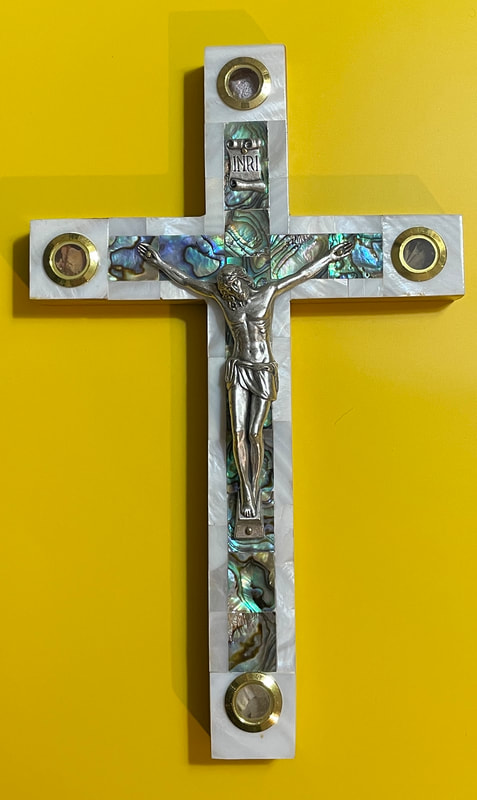
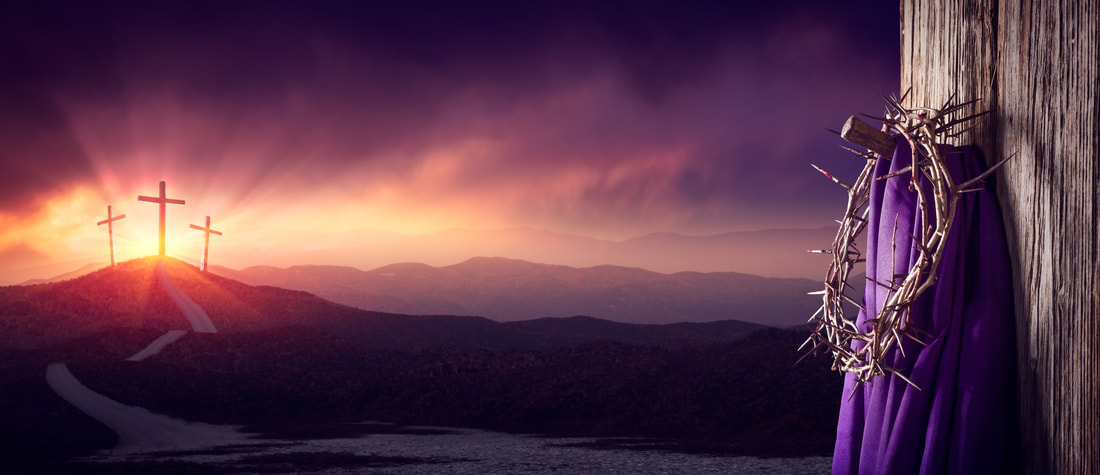
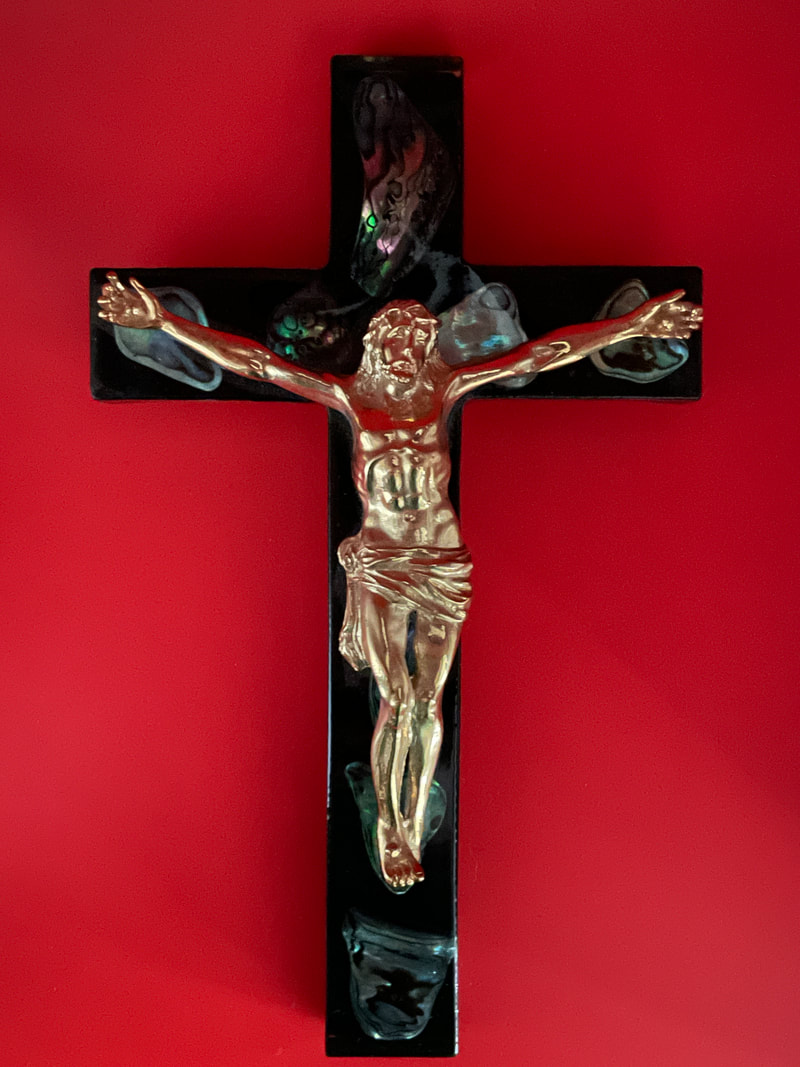
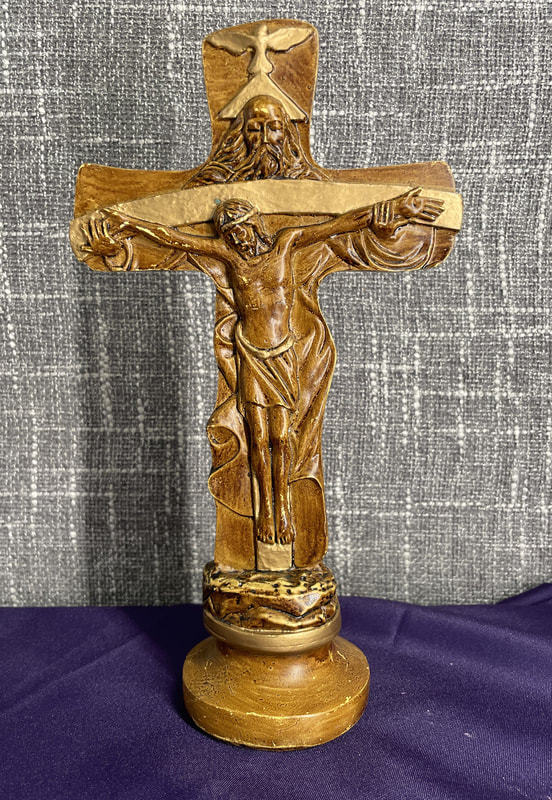
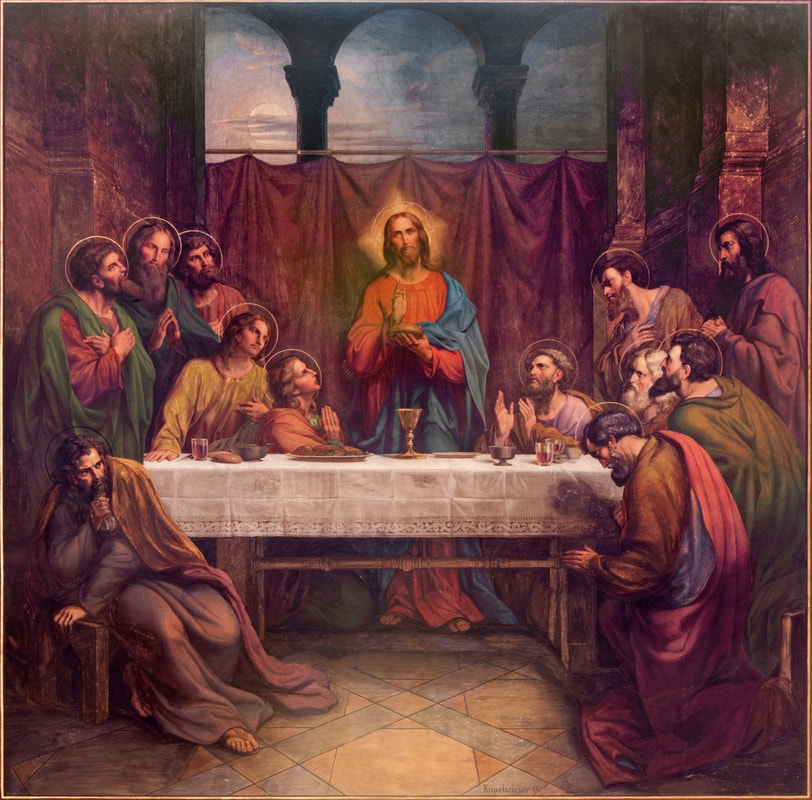
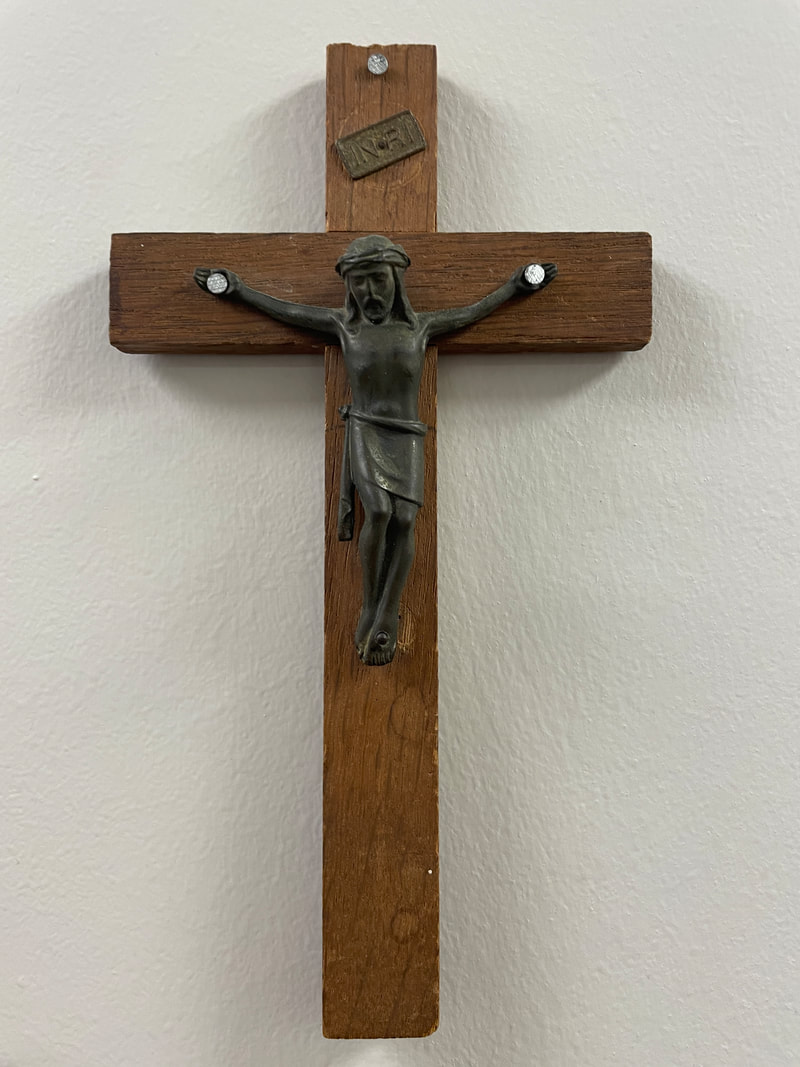

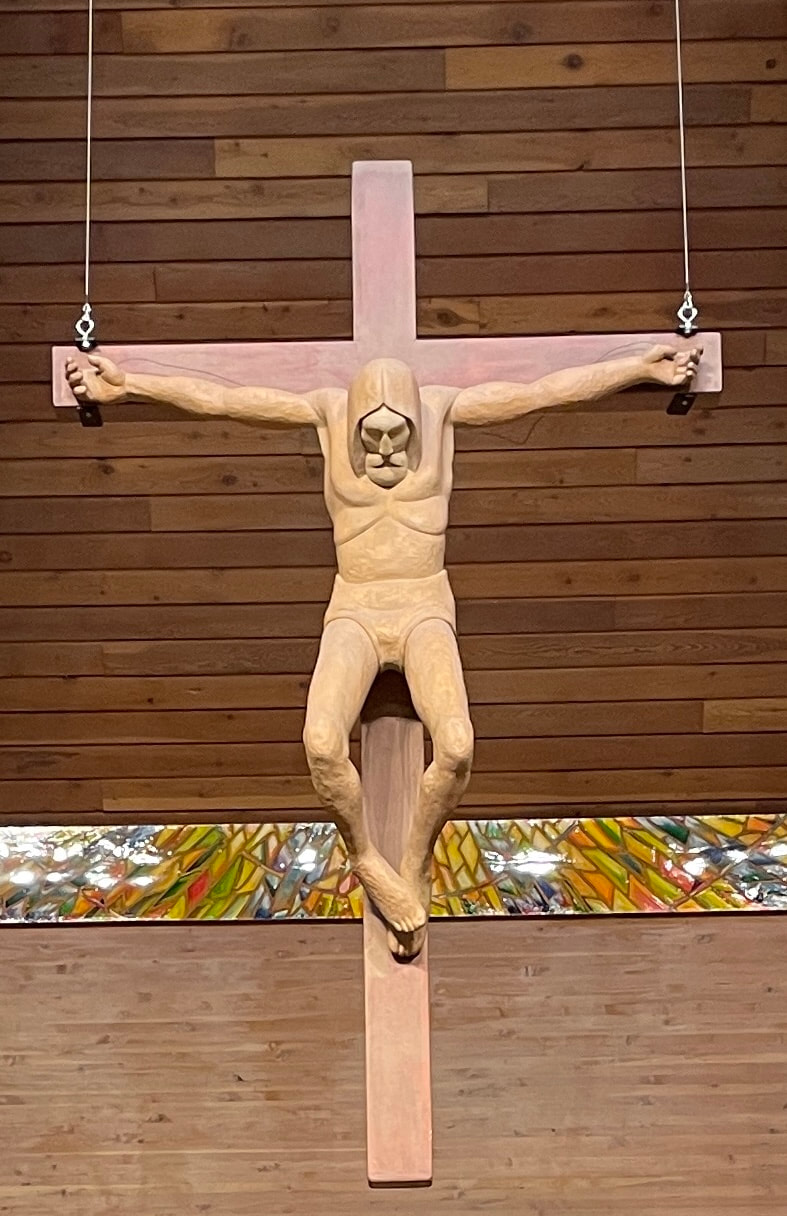
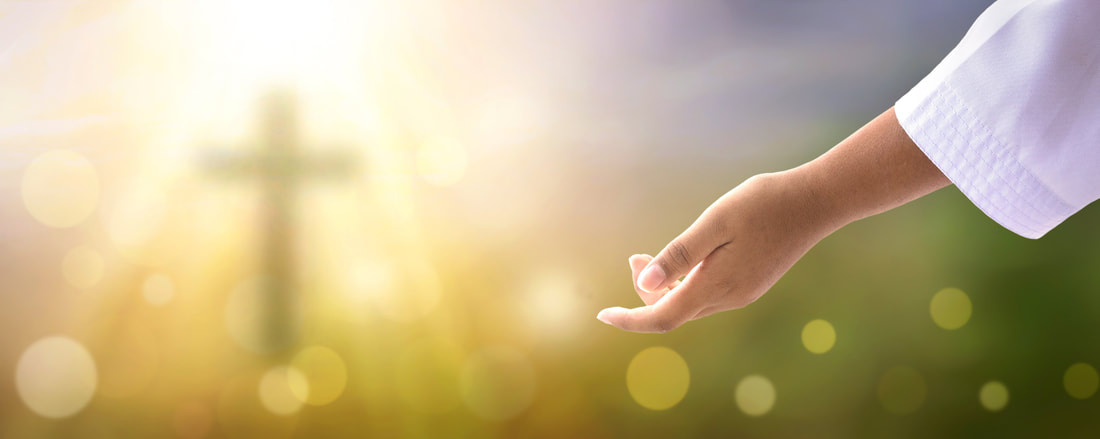








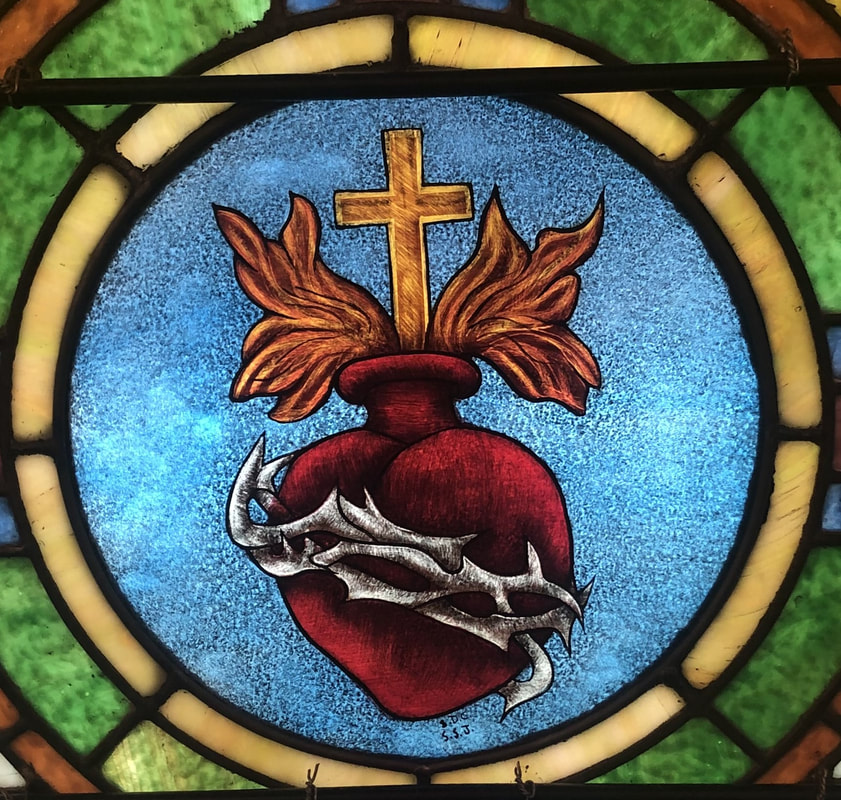
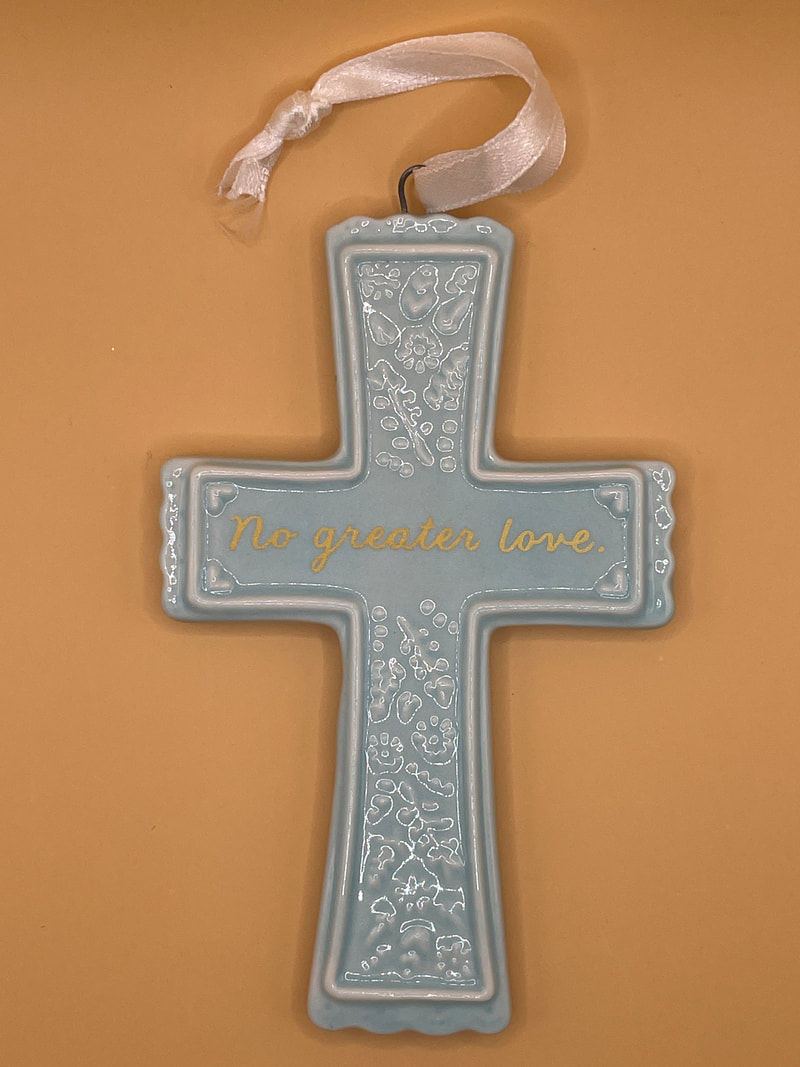

 RSS Feed
RSS Feed
